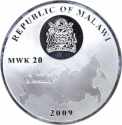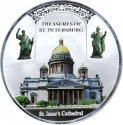You are about to finish your registration. Please check your mailbox (including spam folder). There should be a letter with a confirmation link. Check setting to make sure that your e-mail address is correct.
Send letter againDescription
Founded by Peter the Great in 1703, Saint Petersburg is not only a city rich in beauty and attractions, but it also served as the capital of Imperial Russia under the rule of the tsars. This has left the city with a remarkable historical legacy and an array of grand palaces from the tsarist era. Despite the fall of Tsarist Russia, many of these opulent structures remain, now preserved as key tourist attractions. The St. Petersburg palace coin series offers a glimpse into the lives of the city’s aristocratic families, such as the Yusupovs, Stroganovs, and Sheremetyevs, each palace holding its own secrets and stories.
For three centuries Saint Petersburg was the capital of Russia. The richest people of the Empire lived and worked here while investing money in their beautiful city. Nowadays royal palaces became the state museums but locals still live in former aristocratic mansions. Numerous architectural gems, unusual historical places are open to the public yet are hidden from the eyes of tourists. This tour is designed for those who want to see more than typical places in a popular guidebook. Special and rare spots only locals know, but with great historical and art value.
Obverse

|
Depicts the coat of arms of Malawi within a circle below the country name, a map of the whole Russian Federation Republic pointed to St Petersburg on the map, denomination at the left and year of issue below. REPUBLIC OF MALAWI |
|---|---|
Reverse

|
Depicts a multicolored general view of the Alexander Column in the Palace Square in front of the Hermitage Museum all behind the Narva Triumphal Arch, the title series "Treasures of St. Petersburg" above. TREASURES OF ST. PETERSBURG |
| Edge |
20 Kwacha
Republic
Treasures of St. Petersburg
Hermitage and Alexander Column
Subscribe series
KM#
Treasures of St. Petersburg
Hermitage and Alexander Column



